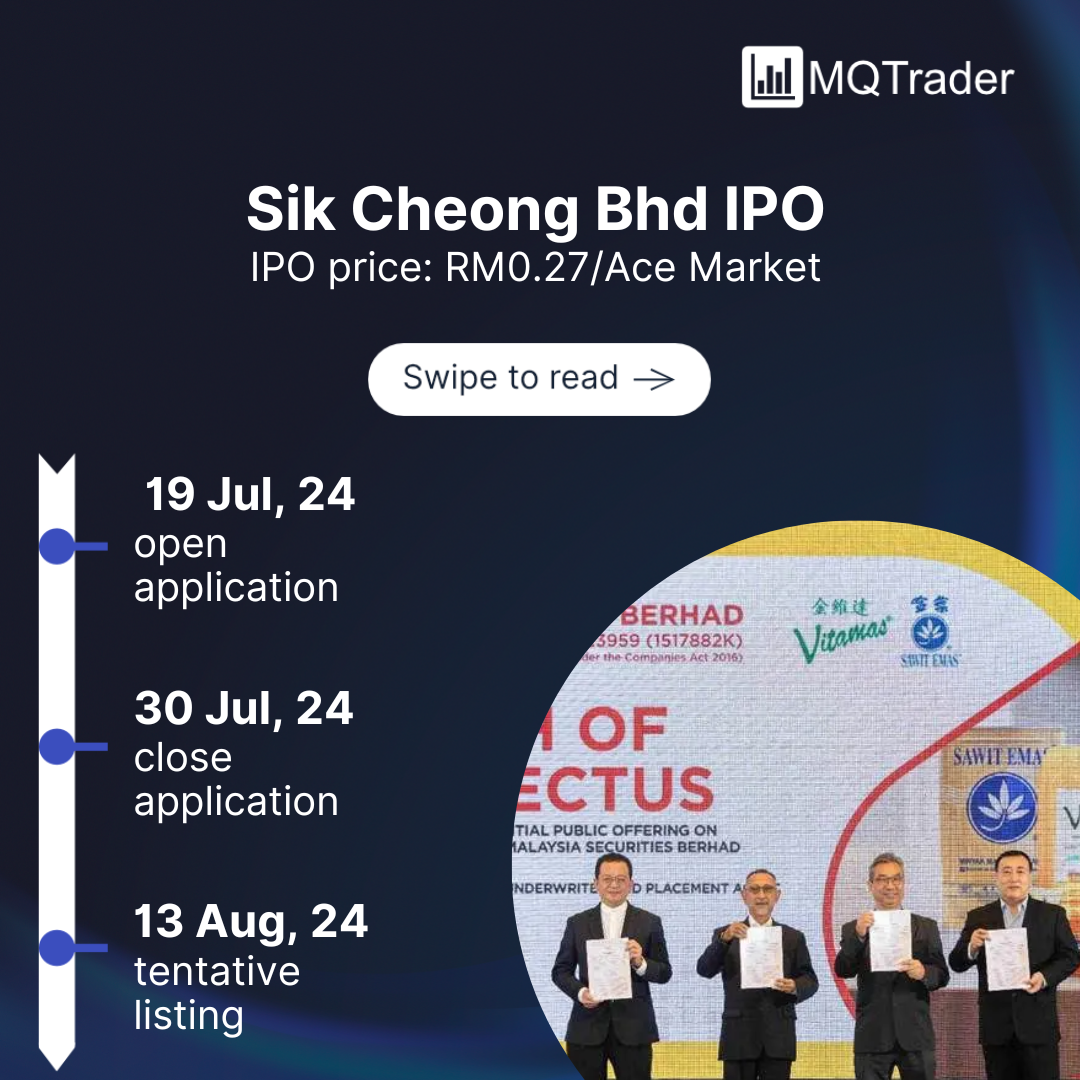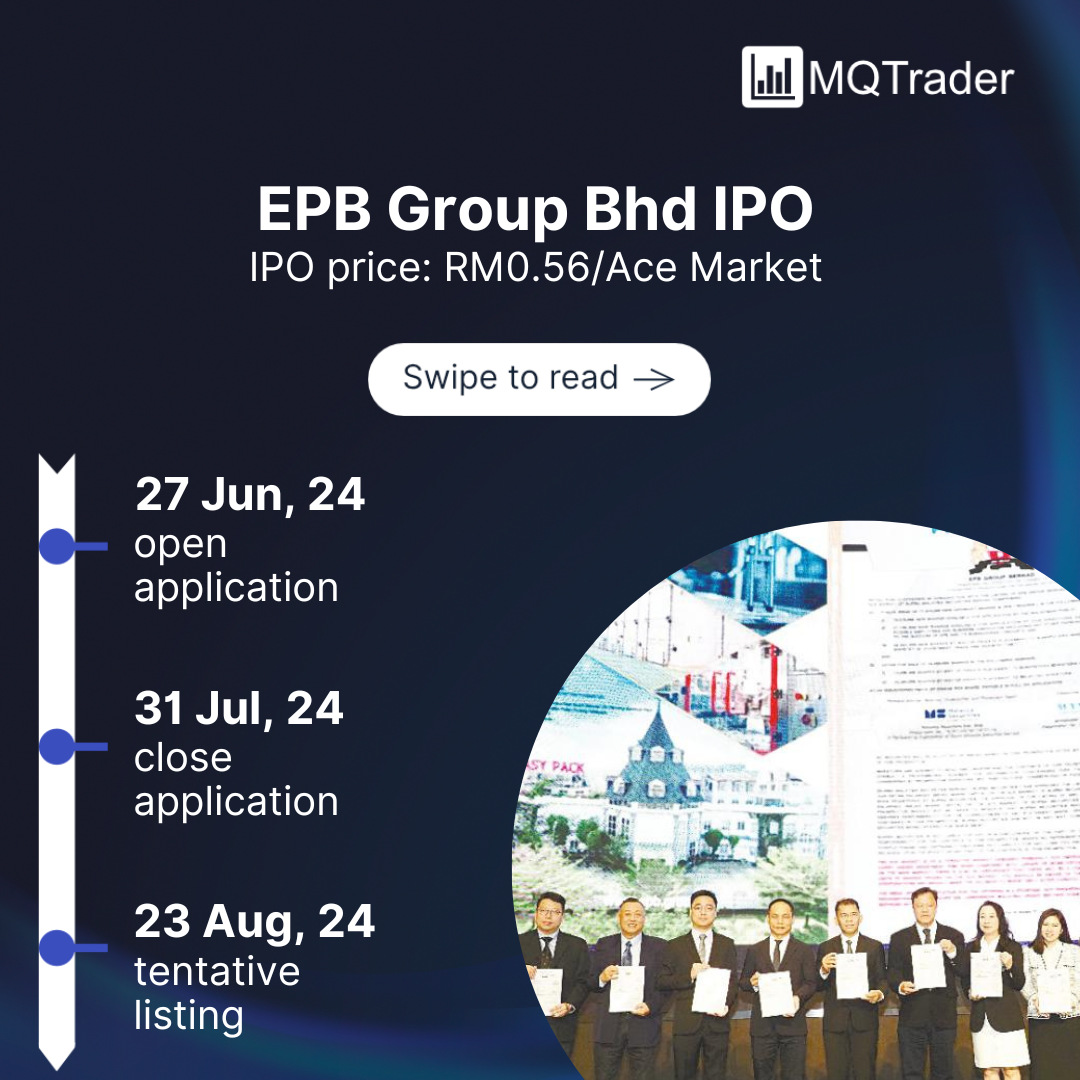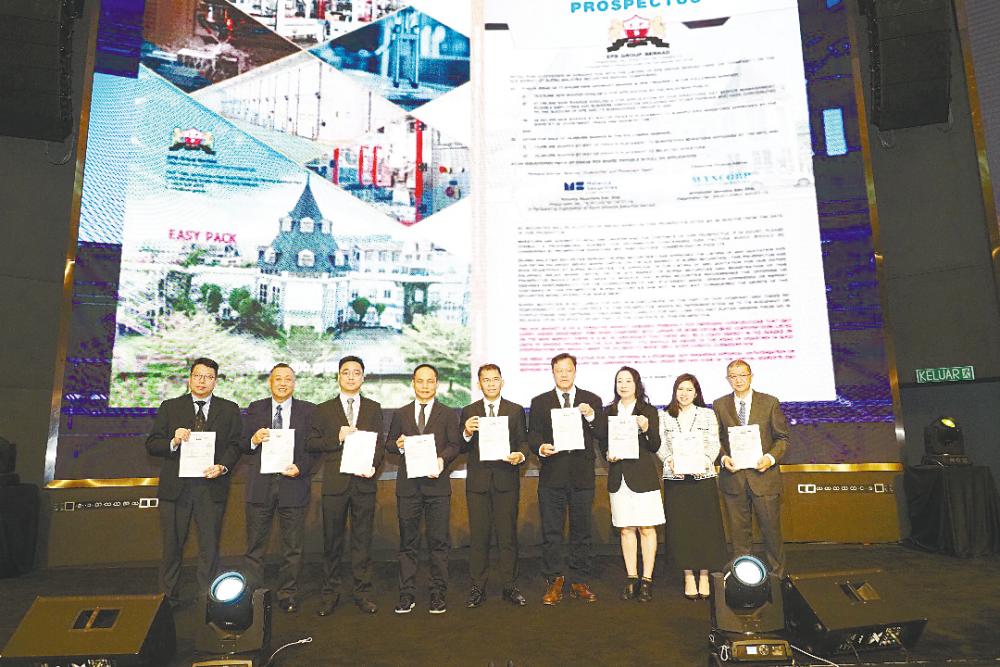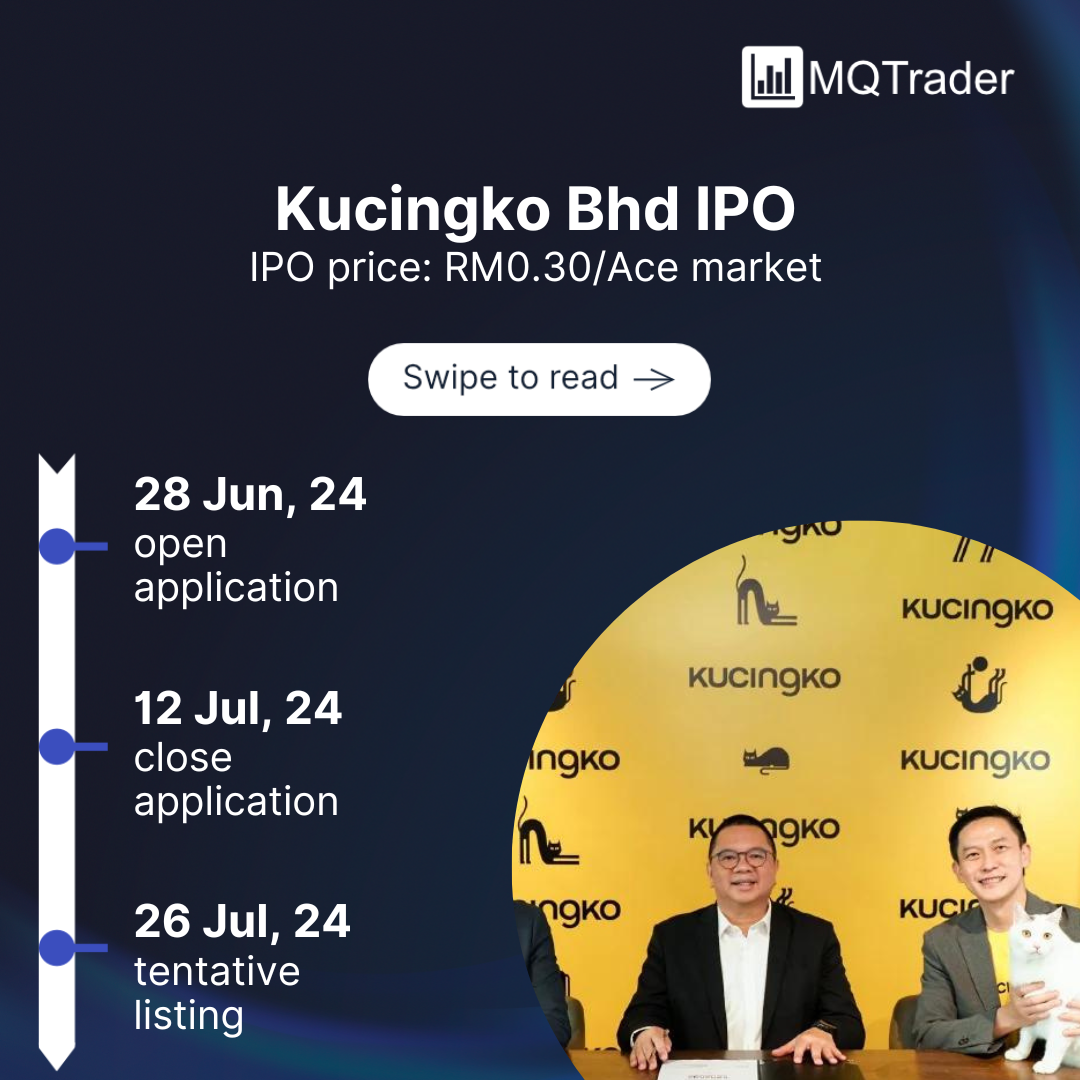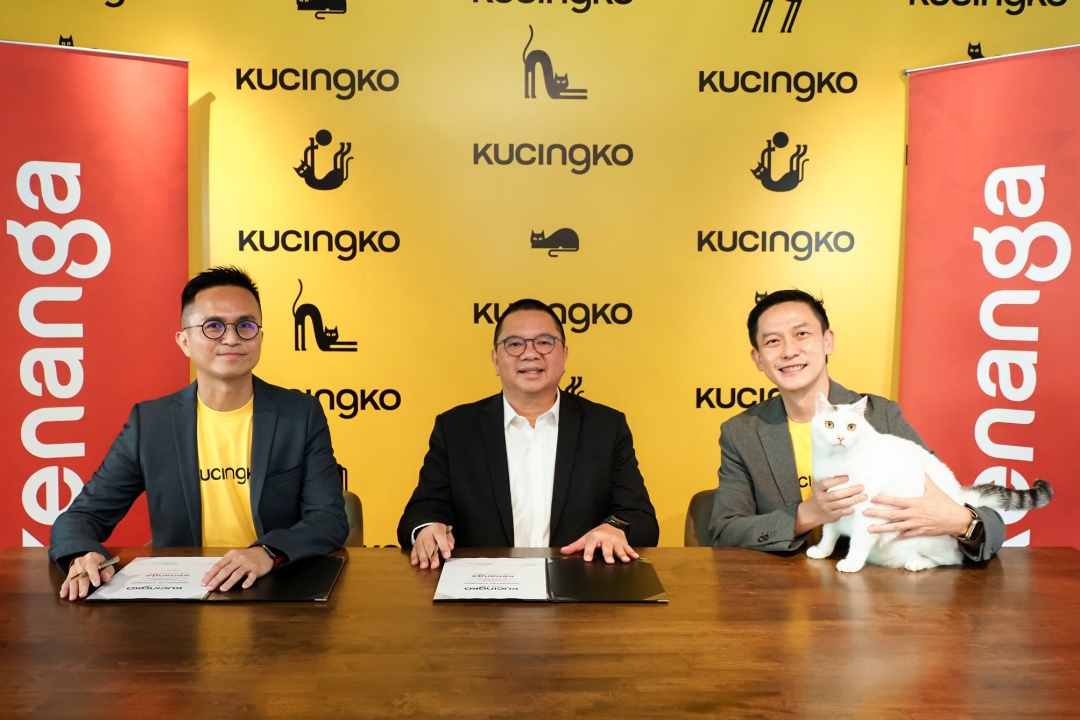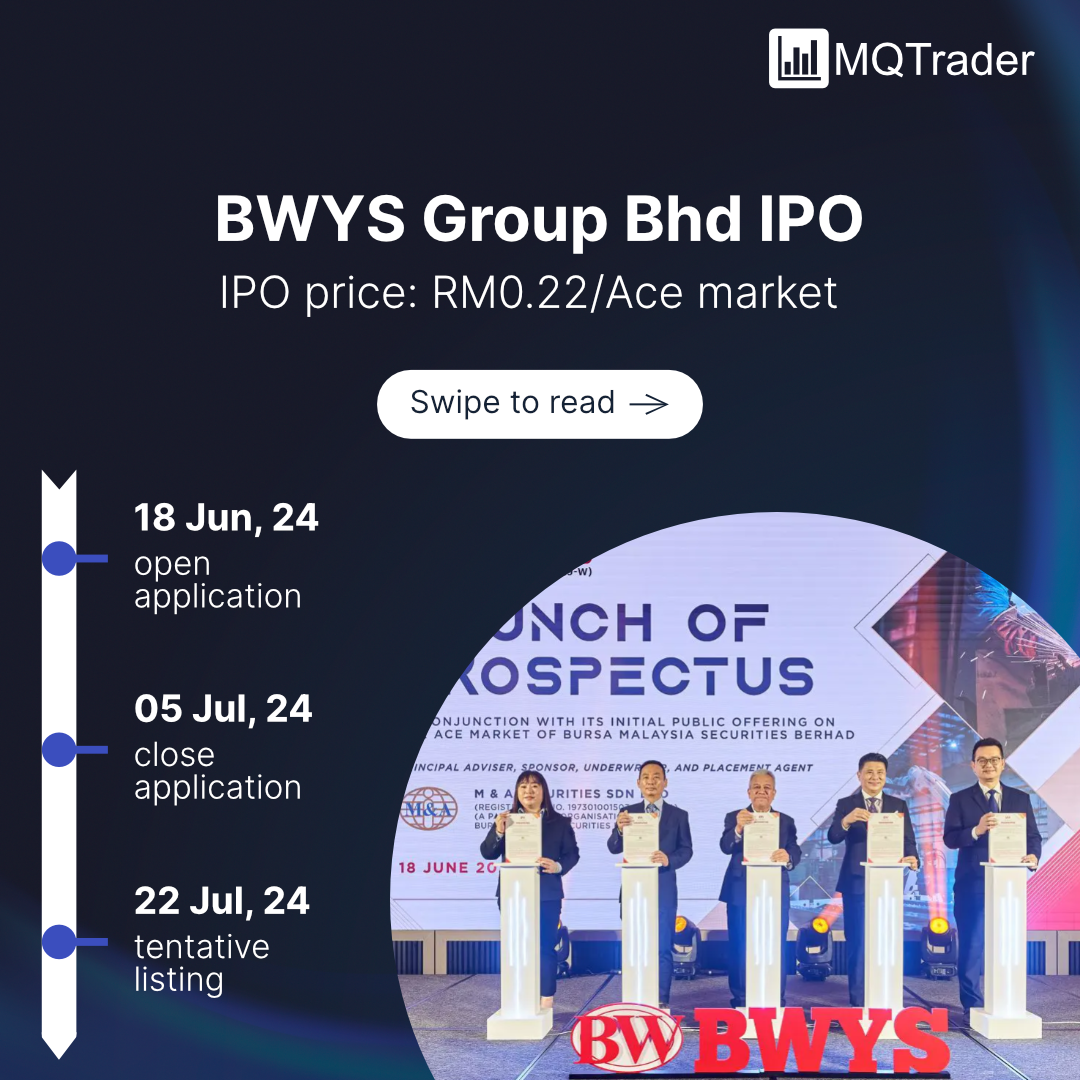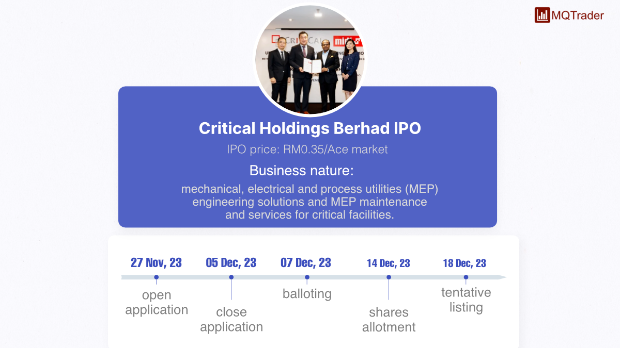Oppstar Berhad's Highlighted Q&A from the management team.
MQTrader Jesse
Publish date: Thu, 02 Mar 2023, 03:51 PM
ACE Market-bound Oppstar Bhd launched its prospectus on Wednesday (Feb 22), with an initial public offering (IPO) price of 63 sen, implying a market capitalization of RM400.81 million upon its tentative listing on March 15. Here is the highlighted Q&A from the company management team (CEO, CFO, etc).
Here is the original transcript from the zoom meeting of RHB RESEARCH NEW IPO BRIEFING: OPPSTAR BERHAD (0275) on 01 Mar 2023
Q: Hi Mr. Ng, I look at your overseas expansions. There will be three locations that you are going to go to. First of all, I know last year 60 percent of your sales were coming from China, and looking at your root map for next year, it seems like in India you have 30 engineers and then in Taiwan, you're going to have 10 engineers, and then Singapore another 9 or 10 engineers if I am correct. It seems like you give the impression that India is a bigger market
A: Yes, our so-called new geographic footprints expansions not only allow us to access the customer that we do not have access to if we do not have a local entity, but it also gives us the opportunity for us to access or tap into their local talent so by the numbers, you can tell that there is a much bigger pool of resources or talent in India compared to Taiwan and Singapore so the expansion itself is for new business as well as our ability to assess the local talent, especially for some hard to find the top position that requires design competency.
Q: Okay thanks. The next question is, are you able to set up everything within a year? How soon do you think you can get your new projects coming online? I do understand that now you are very full with the China project so I'm just wondering for the next one or two years when you think we can see a new project coming on the stream.
A: This one is relying on our ability to hire people with the right skill set. So when is it expansion we cannot hire everybody who is from fresh graduate, we are in an industry where we need to have a team that has the right experience level, we always use 1 3 6 types of models, and for every 10 engineers, we are talking about 1 senior and couple intermediate and 5 to 6 junior. We will need to have that type of team formation. So based on the question of how fast we can start engaging on the project, it will depend on how fast we can mobilize the resources, bring in the new resources, mobilize them from the right team, and we can start taking on the new project. As I mentioned in the early presentation, we (Oppstar) already have a team of very experienced iconic pillars that form our technical backbone because this technical pillar gives us the ability to bring in new team members and form a team in a much faster way and more efficient way so that can take on projects
Q: There’s another question here, how do you manage 500 people in the next 3 years' time and seemingly they are spread across 2 continents also are they going to serve the same customer or serve different customers geographically?
A: So definitely we would like to have a diverse customer base. We have been asked about a single customer or single geography. That is because our size is too small, this is the size matter. In our experience back in 2021 and 2022, we took on a project in which we needed to allocate 120 engineers. At that moment we were like 160 to 170 people in the organization, and imagine that 2/3 of the resources have to be channeled to 1 customer in 1 geography. So moving forward we would like to have a more diverse, so-called geographically rich that we can balance up, we want to serve all the customers in different regions. The other one, hiring is a challenge, especially in Malaysia, because this country only has around 32 or 33 million population so the problem is our country's size. But I have to remember that semiconductor has been in Malaysia for more than 50 years and IC design itself started back in 1986 or 1987, so IC design has been in Malaysia for more than 30+ years, and in these 30+ years it created a group of very experienced guys. I said I, myself, am one of the outcomes of the circle. If you know the industry well and know who to talk to, I still believe we should be able to pull the right group of people with the right talent to form a good company.
Q: I have another question, what’s your vision says given time, how many engineers do you want to employ for example in your field let's say your market leader, how many engineers do they have in their organization? Give us a clue on the numbers.
A: This is only for reference as we didn’t put this in the prospectus. If you look at this industry, I think the Indian design service company is the biggest right now, of course, they don’t just do the IC design, they do engineering services for any field from semiconductors to software to chemicals, anything that you need engineering support they will do it. I think the biggest we are talking about like Infosys or Wipro, is more than 200,000 engineers and of course, those are tier 1. If the tier 2 around the world you can easily find an engineering support company they are in the size of 40k to 50k and also some quite several regional players come to Malaysia because we have the big MNCs that need their support, especially in IC design, the size is easy for 500 people. If you look at Oppstar, actually as I keep on emphasizing size matter, in Malaysia we are the biggest but we do not want to be a “Kampung” champion, we want to build into a size that we can continue to take on a complex project and continue to make our presence in the global market. Hopefully, that will give you a kind of impression.
Q: Okay, thank you Mr. Ng for your visions for the company, at least we get the number. Another question here is how were the annual expenses on the EDA licensing and the second question I have is looking at your IPO proceed, I think 10 million have given for the R&D and I think as an organization, wonder if you have any policy on the R&D let’s say every year you make 10 million and how many percent you are going to put in your R&D. I am not sure if that what’s going in your policy
A: (The CEO mentioned will leave the second question to the CFO). For question 1, as I mentioned we are a pure-play IC design service company, and now we need EDA tools to do our job. I think just a ballpark, we need like 25 to 30 different types of tools, all different types of tools to do our job, remember I said there are around 8-10 different design functions. We need the tools, without tools we cannot do our job, and a pure-play design service company actually provides a service to our customers, and now we have 2 types of models. The first model is our customers purchase the EDA tools and then we use them to design the products that they want, we see most of the customers are doing so because EDA in our business is very expensive, and a lot of big players they’ll like to get the most out from the EDA tools and therefore when they purchase back then they can negotiate a better with the EDA company and then once they bring in the EDA tools they will make sure that the tools work 24/7, this is most our customer mode. And the other customers, ask us to purchase the tools to help them to do the design, for that model we will charge the EDA fees to them and are going to add to the design that we are doing for that, so these are the 2 models. That’s why if you study our financial data, our EDA spending is very minimal because most of our customers want us to use their tools, and here is the first part.
The CFO answered the second part.
A: As you know in the prospectus we do provide about 12 million Ringgit if I’m not wrong for the R&D cost, if you read the prospectus we will call the IC design at a development stage of the chip development, any things that we do is actually at the development stage which means we do the development for our customer and we get paid from it and obviously within the company we do some research, especially for turnkey business. Although the turnkey design may look like the margin is very high in the background as in any of your big consultants or major consultancy firm, you need to do research before even giving a proposal to your customers, so that portion will have an element of R&D because we have a team of people whenever some customer ask us for certain specifications of chips and all those. Therefore, we will have people researching that and obviously as we grow bigger and we do intend to focus more on turnkey projects, we will have more R&D costing and allocation for our company. In terms of how many percent, at the moment I can say is about 10% which is reflected in the PML.
Q: Okay, understood. When talking about the expense and capitalization, in your prospectus you also mentioned that going forward the turnkey project payment will be more like a progressive payment so is it in our announcement is going to be a quarter so we are not going to expect every quarter is a straight line growth and it’s going to be up and down am I correct to say so? I just want to give our investors a full picture.
A: (CFO continues answer) You are right. However, even for our turnkey project, we don't make it too lumpy that sometimes customers also take an effort to make payment in one tranche so we build them in a form of intellectual property. So it’s all progressive and as we grow into more turnkey you will see that volatility/fluctuation getting lesser and lesser. I mean this is not like we are the only type of company doing this and many companies are project-based, turnkey project-based, you may not see that kind of lumpy and fluctuating type of revenue but our cost is pretty fixed because is probably manpower only (It is base on monthly salary) except for a certain period where you pay the bonus.
Q: Okay. And the next question when talking about the sustained number revenue, I think they are concerned that now you are doing project by project. Do you have any strategy to maintain the income?
A: (CEO gets back the speak) I will say the recurring income will be in the long term because as I mentioned the recurring income we are talking about IP and that is a different segment because for the IP you need time to develop and even though you can develop, the ability to sell and to generate revenue will also need time. So I will say IP will be long-term. What we are seeing today is the IC design talent/workforce is pretty short and this is a worldwide observation. This is because not many youngsters like to take out engineering (CEO mentioned because of the difficulty to study engineering, therefore the field is lack manpower). Another reason is that the US started to deglobalize because of protectionism. It created a scenario in which a lot of countries would like to develop their technology (US, China, Taiwan, India, Korea, Japan), which would make the workforce and resources more stringent. So that is where Oppstar sees this as an opportunity especially since I always said Malaysian engineers it has this strength (CEO mentioned Malaysian engineers speak less and work hard) also Malaysia is staying in a neutral country, we don’t site US or China and our engineer is multilingual and the cultural (eastern culture) and all those are the competitive strength that the whole country needs to capitalize on.
The CFO saw a question about whether the trade war is beneficial to Oppstar or affects it and he would like to share some things on it.
A: It has pros and cons. If you start looking at the trade war or terminology of a trade war started maybe sometime around 2018 when Donald Trump is still around and it continues until today. The trade war is not just about China and the US if you notice, although it is focused on these 2 countries it’s not just China and the US, it involved European countries, Japan, Taiwan, South Korea, Australia, etc. So when you see that, I mean there’s another terminology like people use where the old days like 20, 30 years ago we tend to hear terminology like globalization but today, that there’s toward deglobalization. So what does that mean with deglobalization and how does it impact IC design? Globalization means if 1 country is strong in 1 area, say for example US is very strong in IC design or chip design, they will focus on that and the Chinese will go and buy the chips from them, and China is good at manufacturing and will do manufacturing for the US. But when it comes to deglobalization, lots of countries don’t feel comfortable just like I cannot be just doing manufacturing for other countries. That is why you can see the US is also focusing on manufacturing in certain areas. Similarly to China, similarly to Japan, Japan is putting a lot of incentives into IC design or the front-end semiconductor sector, if you look at that whole perspective. Holistically, the trade war will bring more potential demand for individual countries or regions just for front-end semiconductors which is the more important portion that they want to focus on to.
Q: I see, that is the reason Oppstar plans to expand to 3 countries. I will ask the last question as the time does not permit it. Part of going to 3 countries and you’re hiring about 60 engineers for the post-silicon validation so I would just want to ask Mr. Ng, could you describe to us how big the market is in this post-silicon validation, although now it is a very minimal contribution? Just want to understand the size.
A: So for the post-silicon validation we are talking about when the first component when the chip is designed fabricated and packaged before they go to market you need a group of engineers to validate that chip, not at the tester testing but at the system level in the lab putting in their targeted customer of products and you do a lot of validation, for example, electrical validation, functionality power, software, etc. There is a lot of work needed. From our experience, a big company is talking about a couple of hundred design teams for one product line. This is where we see the needs coming in especially when the chips and nanometers become smaller and smaller, we can pack more transistors or devices into the same silicon and there are a lot of features that you need engineers to go in and validate. Therefore we are seeing that need is coming up and there’s where we see this is a very natural segment, that is very related to design that we can go into. If we do it right, this is a good business that we can build.
Before ending, the CEO Mr. Ng would like to make a last comment.
Mr. Ng: As I mentioned, in semiconductor manufacturing we see a very good, very solid ecosystem, and if the whole country is doing it (means government, private companies, university, investment), we can view a friendly environment and we can encourage more companies to join this semiconductor front-end. What I believe is we should be able to duplicate the success story from the manufacturing to the front end.
Click here to refer the IPO - Oppstar Berhad (Part 1)
Click here to refer the IPO - Oppstar Berhad (Part 2)
Community Feedback
We encourage traders to try out and evaluate the MQ Trader system and provide us feedback on the features you like to see in the system. We have received many positive feedbacks so far, and we are currently compiling and reviewing them for possible inclusion into the next release of the system.
We would like to develop this system based on community feedback to cater for community needs. Thanks to all those who have provided valuable feedback to us. Keep those feedback coming in!
Disclaimer
This article does not represent a BUY or SELL recommendation on the stock covered. Traders and Investors are encouraged to do their own analysis on stocks instead of blindly following any Trading calls raised by various parties in the Internet. We may or may not hold position in the stock covered, or initiate new position in the stock within the next 7 days.
Join us now!
MQ Trader stock analysis system uses Artificial Intelligence (AI), various technical indicators and quantitative data to generate accurate trading signals without the interference of human's emotions and bias against any particular stock. It comprises trading strategies which are very popular among fund managers for analysing stocks.
MQ Trader stock analysis system is SPONSORED for MQ Trader members. To use this amazing tool, you can sign up via MQ Trader Sign Up!
Contact us
Please do not hesitate to contact us if you have any enquiry:
Facebook: https://www.facebook.com/mqtrader
Instagram:https://www.instagram.com/mqtrader
i3messanger: https://messenger.i3investor.com/m/chatmq
YouTube: https://www.youtube.com/channel/UCq-26SGjlQTVQfO7DoEihlg
Email: admin@mqtrader.com
Related Stocks
| Chart | Stock Name | Last | Change | Volume |
|---|
More articles on Initial Public Offering (IPO)
